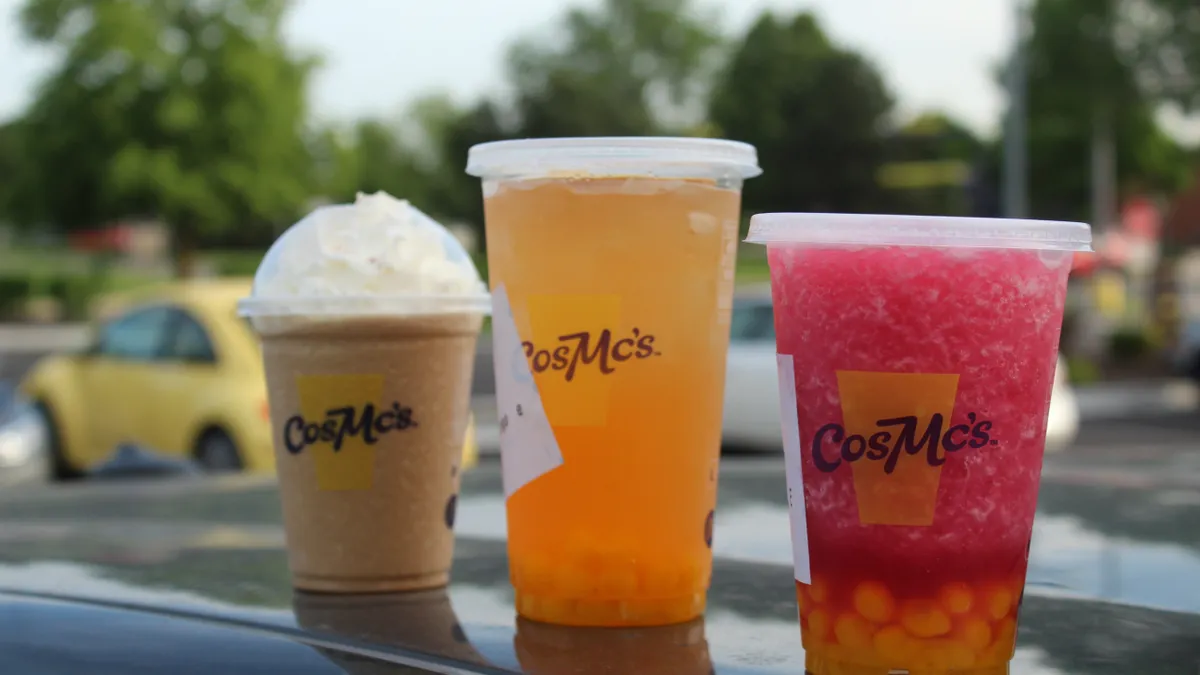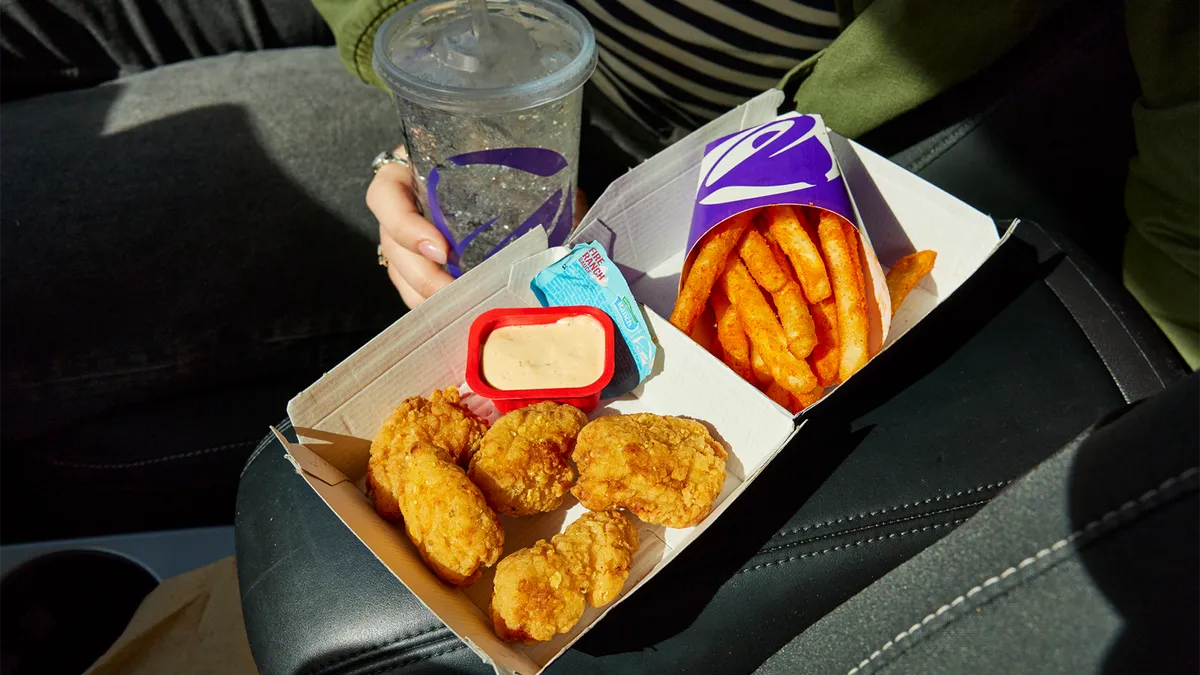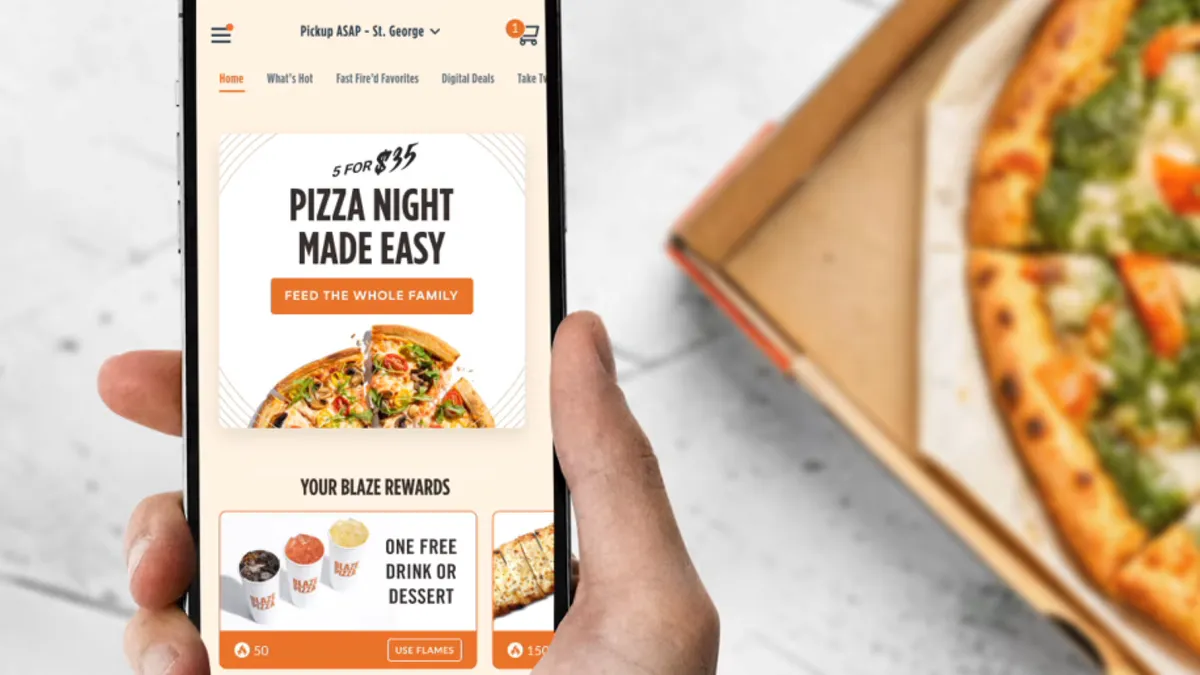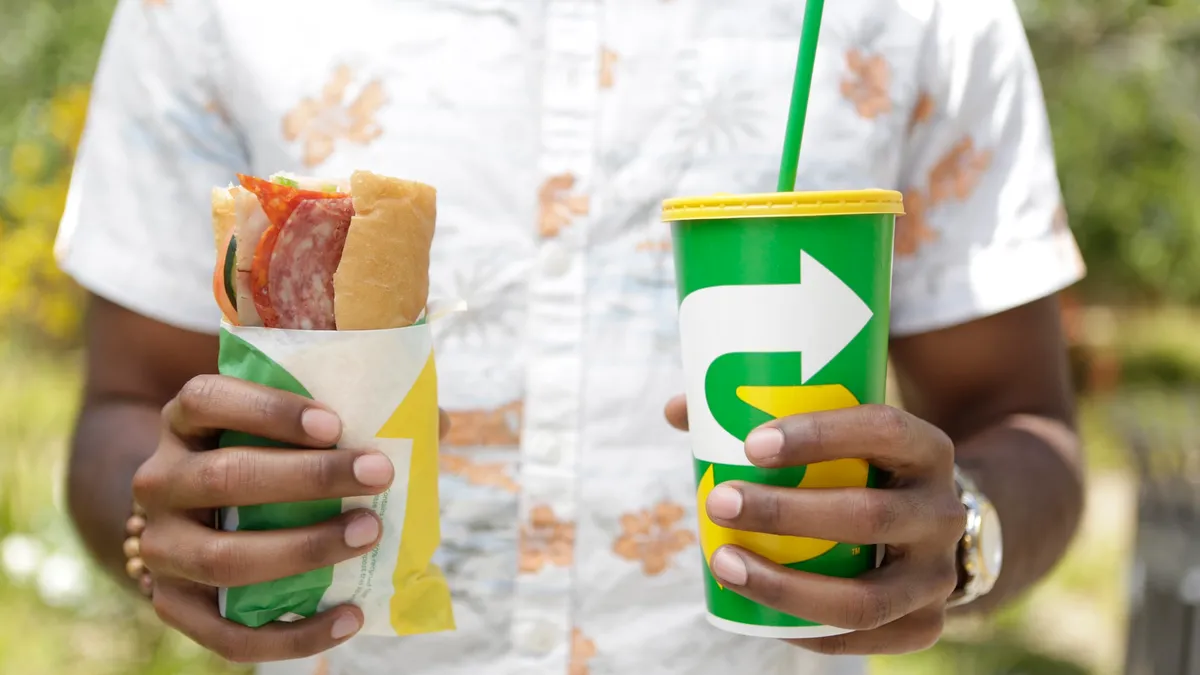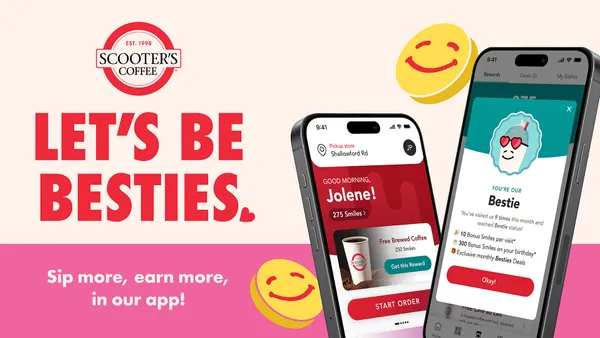The Coca-Cola booth at the 2024 National Restaurant Association Show was a flavor endurance run.
Between the sub varieties of Powerade Sours, Body Armor Zero Sugar, Spiced Coca-Cola, Sprite Chill, Gold Peak Zero Sugar Iced Tea, Dasani Refreshed, Topo Chico Sabores, Topo Chico Mixers and Hubert Lemonade, it was easy to find oneself drowning, figuratively, in a rush of sweet, vaguely fruity, brightly colored drinks.
To hear brands and suppliers tell it, this onslaught of sweet, but not necessarily sugary, snacks and drinks is a key element of restaurants’ efforts to reach Gen Z consumers.
“Gen Z loves new flavors, really exciting, new, colorful, vibrant, flavors,” said Brian Jackson senior manager, channel and customer strategy with Coca-Cola.
Younger consumers want new looks, old flavors
Although Gen Z is keen on visual novelty — the kind that invites lots of Instagram posts — these consumers are mostly interested in flavors they already know, according to Robert Byrne, principal at Technomic.
“Just 12% of Gen Z say that they actively seek out new flavors,” Byrne said. “Many of them are only recently coming into adulthood and out of childhood; their preferences skew sweet and spicy.”
Byrne said Gen Z’s favorite flavors may eventually become more complex, but at present they opt for strong, familiar flavors.
“Bold and boring is a way to look at it,” Byrne said. “Fruity and sweet flavor preferences find a natural home on a beverage menu, specifically.”
Lynwood Mallard, chief marketing officer for J&J Snack Foods, said the desire for known but still differentiated flavors among younger generations is benefiting particular types of snack foods, like churros.
“In our last quarter, our churro business grew more than 27%,” Mallard said. “Churros are a bullseye for dessert snacks: Bite size, very consumable, fun, somewhat exotic.”
J&J also makes a long-lived, sweet, brightly colored beverage platform: the Icee. By combining the Icee’s well-known format with specific tie-ins — the brand has collaborated with the Trolls Movie and Ghostbusters — J&J wants to give consumers “permission to be a kid again,” Mallard said.
That direct connection back to childhood flavors could be useful when marketing to a demographic that’s still young, Byrne noted. At the NRA Show, J&J was showing off a Froot Loops flavored Icee that managed to attain an uncanny flavor resemblance to the breakfast cereal.
Speaking to Restaurant Dive in an interview in June, Caribou Coffee’s chief brand and marketing officer, Erin Newkirk, said the brand has seen younger consumers move away from hot coffee toward cold brew, and now towards sweeter, fruitier energy drinks. In May, Caribou introduced a line of energy drinks with a high caffeine content and a base of soda water, or lemonade.
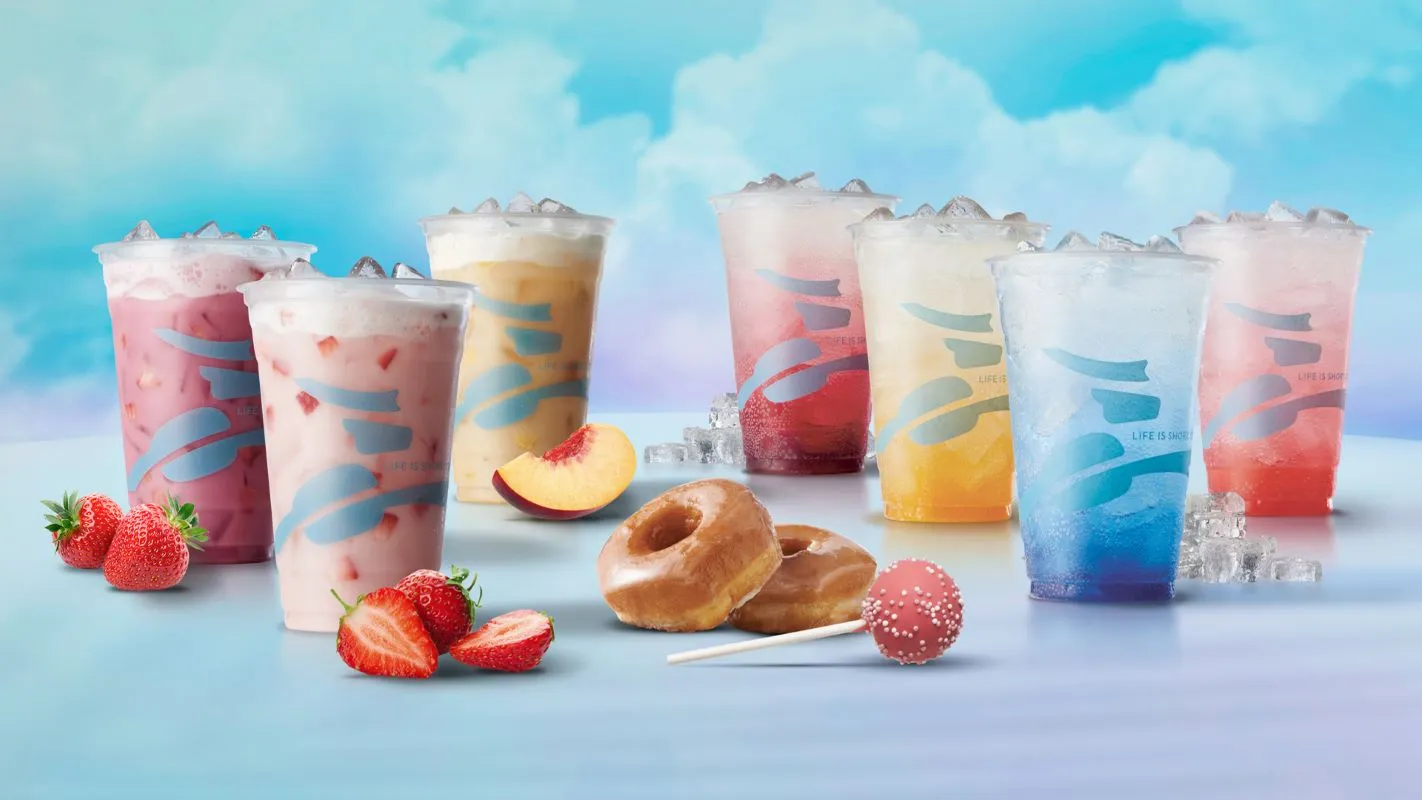
Caribou’s summer drinks have performed about twice as well as the company was expecting, she said.
“People are looking for something other than coffee-based beverages in the afternoon,” Newkirk said. “[They’re] wanting something a little bit sweeter.”
In the afternoon, Caribou sees a higher consumption of fruity drinks and energy drinks, rather than coffee, which remains mostly a breakfast drink.
The combination of bold and boring flavors was in evidence at the Coca-Cola booth and elsewhere on the showfloor, like the Frappes at Ghirardelli’s booth, and off the show floor at CosMc’s. McDonald’s, looking to balance the margins beverages traditionally offer against the operational complexity of customized drinks, is testing a whole host of boldly boring beverages a forty-minute drive from downtown Chicago, including its highly caffeinated Churro Cold Brew Frappe, one of the best-selling items at CosMc’s.
Healthy-ish snacking
Concerns about nutritional content could lead to shifts in the popularity of beverages, Bret Thorn, senior food and beverage editor at Nation’s Restaurant News, said during a panel discussion.
“Everyone's focused on nutrition that they enjoy,” Thorn said. “I would expect us to see more nutrient dense things like berries [added to beverages].” Coca-Cola’s profusion of unsweetened or zero sugar options seemed to be designed to appeal to the market segments interested in perceived healthier snacks.
Mallard said Gen Z’s desire for healthy-seeming menu items extends from beverages to snack foods.
“In the mainstream [of snacking], you'll see migration to healthier snacks,” Mallard said. “Whether that means protein inclusions, calorie reduction [or] portion control.”
The same principle extends to drinks, Kelleigh Gamble, senior director of brand at Tractor Beverage Company said during a discussion on Gen Z’s drinks preferences.
“They're more conscious about what they're putting into their body,” Gamble said, leading to a greater adoption of non-alcoholic cocktails.
For Coca-Cola, this has meant the introduction of new SKUs, like the Powerade Sours, a zero-sugar option designed especially to appeal to health-conscious Gen Z consumers.
This growing preference for healthy food has driven search interest in organic and vegan options, and may help explain some of fast casual’s popularity, Alison Lin, Yelp’s head of product for restaurants, said in an interview.
Caribou Coffee feels this trend plays to its strengths, Newkirk said. Caribou tries to use whole ingredients in its beverages, like the pumpkin puree it uses in place of a syrup in its pumpkin spice lattes. The brand uses fruit in its summer beverages, giving it a more wholesome sweetness than drinks that are based solely in sugar, though its beverages still contain plenty of sugar — like the 56 grams in the large size of its Strawberry Fruit Shaker, for example.
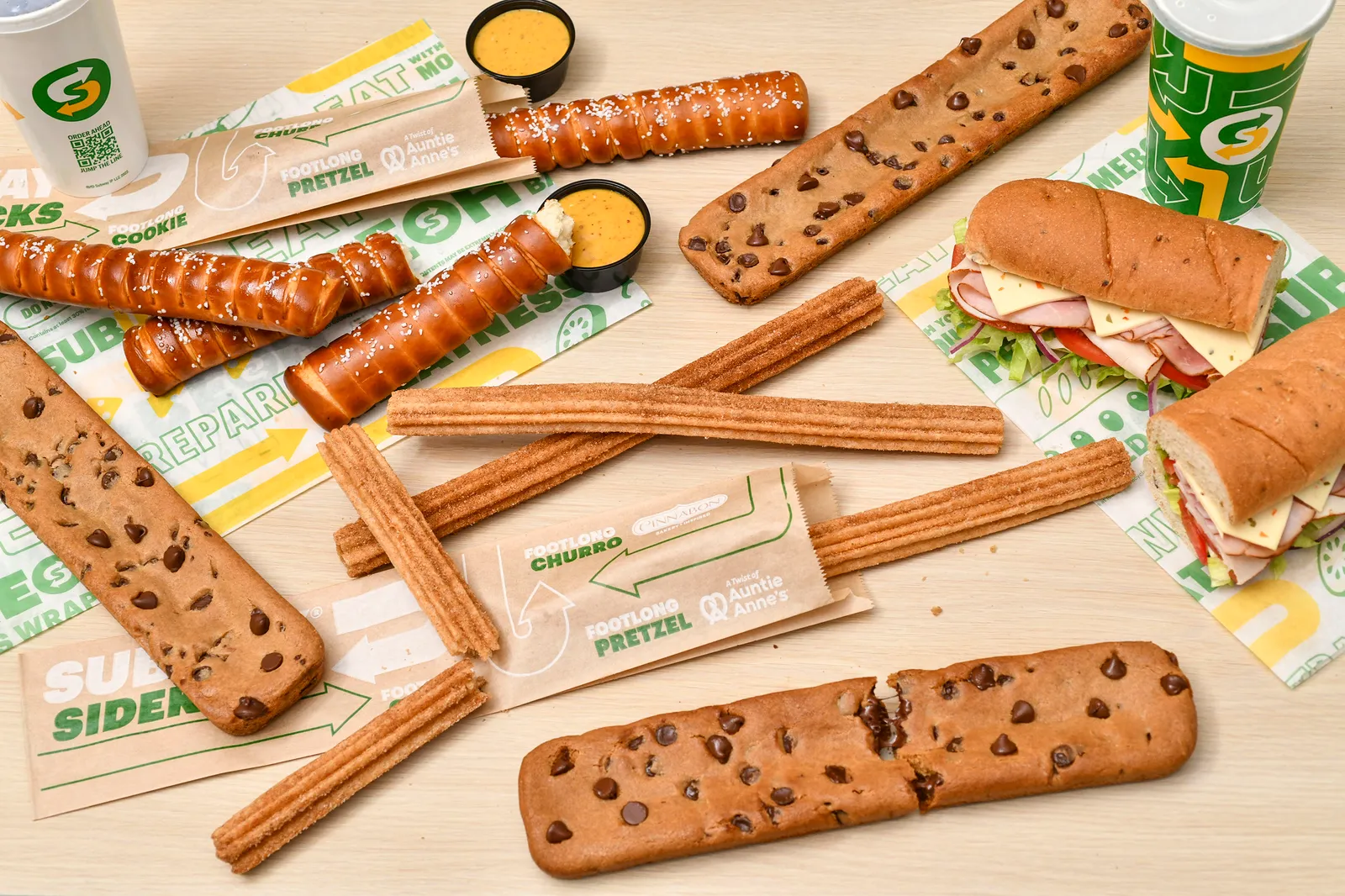
The way Gen Z eats
As flavor patterns are shifting, so too are consumption patterns, often in a way that benefits the snacking occasion.
“Gen Z are consuming food in the car more often than other generations,” Byrne said, due to the unique time pressures facing younger consumers.
“Over half are saying they're using restaurants to get through their busy day,” Byrne said.
Many consumers have shifted towards an afternoon snacking daypart, Newkirk said. These customers favor smaller items, like cake pops, than consumers looking for a whole meal, but the rate of food attach is comparable across dayparts. Restaurant brands have adapted by adding new snacking items to their menus, like Subway’s footlong Dippers and Sidekicks.
Social media engagement offers an interactive aspect, with Gen Z consumers spending so much time online. In 2022, the Los Angeles Times reported that Gen Zers spent about half their waking hours online.
The fact that so many people discover restaurants online has pushed tech companies to change the way they show off restaurants. Yelp, for instance, is making its restaurant discovery process more photo- and video-centric, Lin said.
“If you look at the search results on Yelp, it's very photo forward,” Lin said. The company is also working to integrate with several unspecified social media platforms.
“No matter where customers live, we can capture that demand,” Lin said.
For Caribou, this has meant intensive outreach on social media. The company has a brand ambassador program with more than 300 participating influencers, Newkirk said, and it is looking forward to the launch of a TikTok based promotional dating show later this summer, though Newkirk could not share which influencer would serve as the host.



